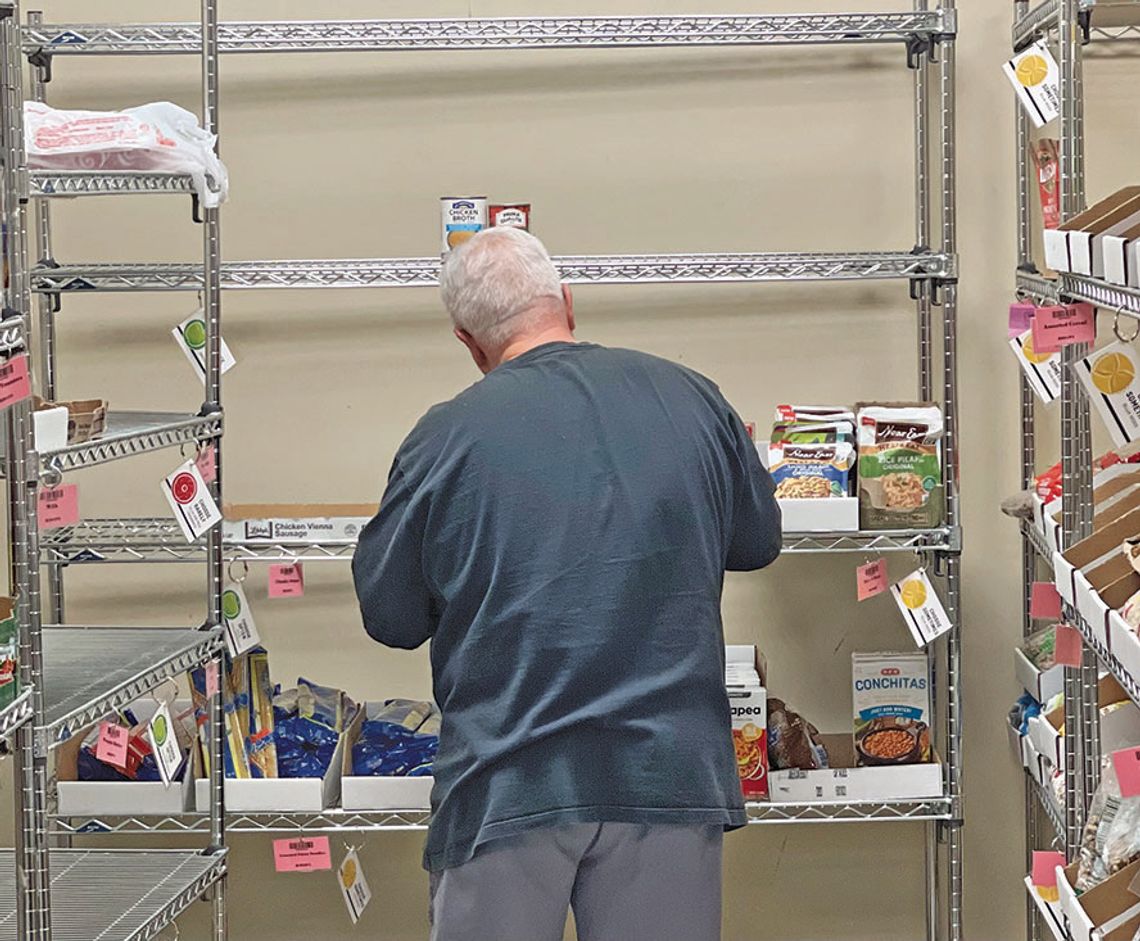Malnut r it ion is a growing concern among older adults and its root cause has been on the rise in Bastrop County, according to the Nutrition and Aging Resource Center.
This condition, which often results from poor diet and food insecurity, has become more prevalent locally in recent years.
The Bastrop County Emergency Food Pantry & Support Center, the county’s first defense for families going through a period of transition, has recently provided more emergency food assistance, education and support for county residents than ever before in its 36-year history, according to Director of Marketing and Communications Kelly Manfredini.
The local team served over 80% more of their neighbors than just three years prior, hit with a 30% increase in requests for food in 2023, and a near-50% reduction in food sup- ply, pantry representatives added. “It’s important to note that no food bank or pantry has been immune to the supply chain challenges facing the country,” said Central Texas Food Bank CEO Sari Vatske. “Issues ranging from higher demand to transportation availability and price volatility have corresponded with decreased donations across the board. It’s a stressful time, made even more so by a decrease in government support.”
The U.S. Department of Agriculture reported that 13.5% of households experienced food insecurity in 2023, which it defines in two ways: low food insecurity, where the quality and variety of food are reduced, and very low food insecurity, where families regularly skip meals due to financial constraints.
In Bastrop County, service providers and caregivers can help combat malnutrition by identifying risk factors, recognizing symptoms and connecting older adult s with cr it ical resources. The Texas Health and Human Services Commission offers several programs, including the Supplemental Nutrition Assistance Program, which can now be used at Elgin’s weekly farmers’ market to access nutritious, locally sourced options.
Aging and Disability Resource Centers, part of Texas’ No Wrong Door system, offer longterm support to older adults and families, streamlining access to a variety of services such as home-delivered and congregate meals, and evidence-based fitness programs, center representatives said.
Despite these options, the Bastrop County Emergency Food Pantry continues to face challenges. Executive Director Tresha Silva reported that, in addition to rising food requests, the pantry was also forced to spend thousands of dollars purchasing staple foods due to reduced supplies from the Central Texas Food Bank.
“In all of the 22-plus years that I’ve worked for this organization, I have never seen the need this high,” Silva said. “The low food supply and the high need combined to create a perfect storm. We are being forced to spend more on food just to continue serving those in need.”
Even with a 10% increase in community donations last year, Silva said the pantry must continue purchasing food wholesale.
In 2022, the pantry served 4,297 clients and distributed 390,447 pounds of food, with 66% of clients needing only one-time emergency assistance. Silva expects these numbers to continue rising.
“We need the community’s support now more than ever,” she said. “We cannot sustain this model without further contributions.”
To help, the pantry encourages financial or food donations. Contributions can be mailed to 806 Fayette Street, Bastrop, TX 78602, or made online at bastropfoodpantry. org/donate. Information on food donations can also be found on the website.
Ef for t s to address food insecurity, particularly for older adults, also include the HHSC Te xe r c i s e Pr e v ent s campaign, which works to rai se awarenes s about the challenges older adults face in accessing nutritious food.
By utilizing available programs and connecting with local services, residents can help ensure that older adults in Bastrop County receive the care and nutrition they need to live healthy, fulfilling lives, resource center representatives said.
.png)






